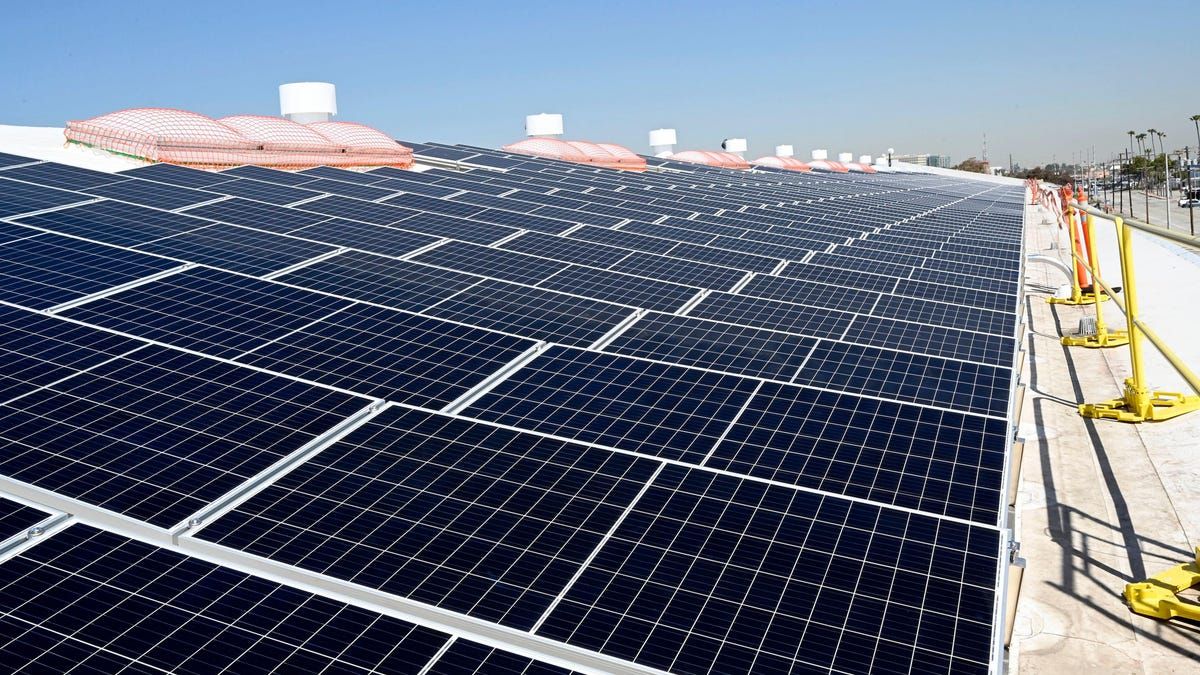Rooftop Solar Panels Could Power a Third of U.S. Manufacturing, Study Finds
U.S. manufacturing takes up a lot of energy, but there’s untapped potential in solar power for that sector, new research finds . A study looked at how installing solar panels throughout manufacturing sites could meet a third of that sector’s power needs.
Researchers used a survey from the Department of Energy and compared states to understand where rooftop solar could best supply electricity needs for manufacturing . They found that companies that focus on textiles, apparel, and furniture would benefit the most from transitioning to solar energy. Their work is published in the journal Environmental Research: Sustainability and Infrastructure.
Advertisement
Matthew Eckelman, an associate professor at Northeastern University, told Earther that he and other researchers used the DOE survey to find regional estimates “of how much electricity each type of manufacturing uses per unit of floor space.” They determined that states in the Southwest, including Arizona, California, Nevada, and New Mexico, received enough sunlight to meet a large portion of energy needs. During spring and summer months, some companies could use solar for up to 40% of their electricity needs, the study found .
Eckelman said that solar is a viable option because so many manufacturing sites have flat rooftops and expansive facilities that have plenty of room for panels. The cost of installing panels has declined over time, which has lowered some of the barriers to using that as a source of energy. But, despite the potential from renewable energy sources, “less than 0.1% of the electricity required by [the] manufacturing sector is generated on-site through renewable sources currently,” according to the study .
Pre-order ASUS ROG Ally Gaming Handheld PC gaming handheld
This 7" gaming handheld is capable of 120Hz and FHD resolution. Available on June 6, 2023. Pre-order for $700 at Best Buy Advertisement
Decarbonizing this sector could knock out a significant amount of emissions for the country and the world. In 2021, industrial activities accounted for 23% of U.S. carbon dioxide emissions, according to the Environmental Protection Agency. “If you have manufacturing that… requires cold rooms, or does a lot of ventilation and air purification, that’s just very electricity intensive,” Eckelman said.
He’s optimistic that more manufacturers in the U.S. will begin to take advantage of the energy- saving potential of rooftop solar panels—e specially now that many states are setting deadlines for transitioning away from fossil fuels.
Advertisement
“There’s been enabling policies at the state level for installing solar PV on rooftops,” Eckelman said. “There’s been more companies doing it. So there’s this kind of neighbor effect, where you see your competitors and your neighbors in an industrial area doing this, and even making some money out of it.”
Want more climate and environment stories? Check out Earther’s guides to decarbonizing your home, divesting from fossil fuels, packing a disaster go bag, and overcoming climate dread. And don’t miss our coverage of the latest IPCC climate report, the future of carbon dioxide removal, and the un-greenwashed facts on bioplastics and plastic recycling.
Source: Gizmodo


